Hold of village healers loosens slowly as coffee, college degrees, and modern medicine ring in the new.
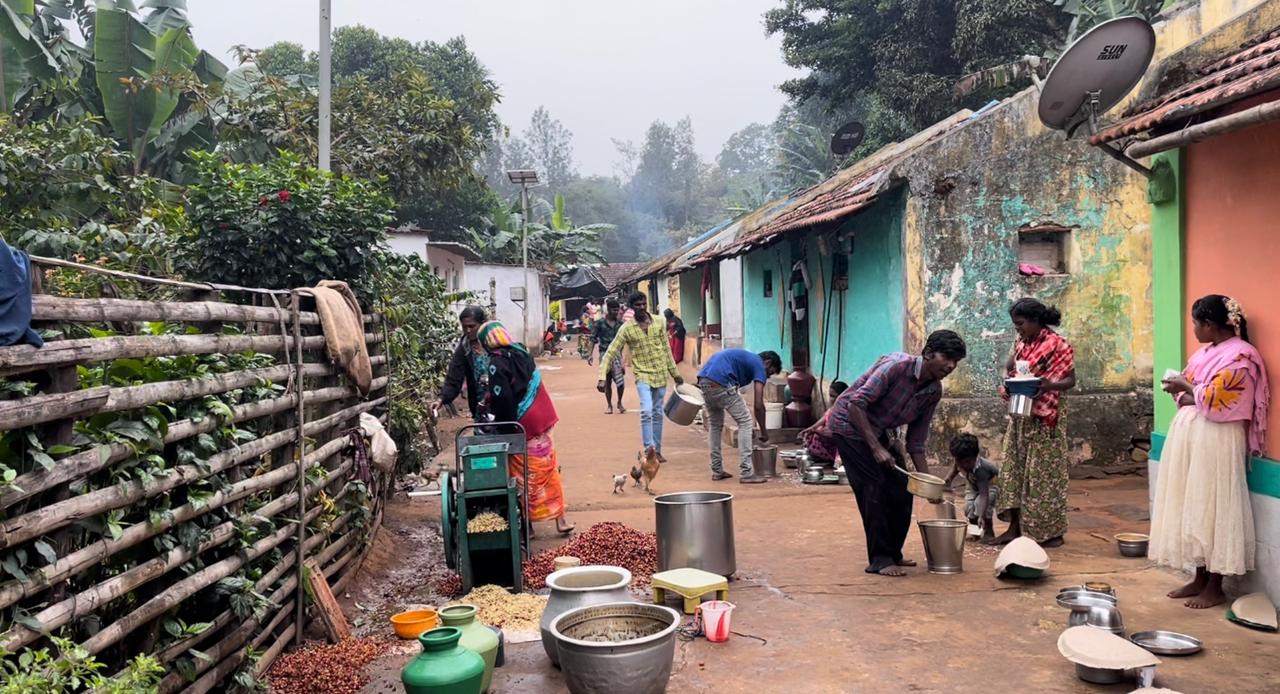
Slowly changing lives of Soligas of BR Hills in Chamarajnagar district. Those Shamanic healers also speak the language of modern medicine, insist on Soligas visiting hospitals for treatments. (Chetana Belagere)
A drive of about 175 km from Bengaluru will take you to the deep jungles of one of India’s oldest mountain ranges, the Biligiri Rangana Betta or, simply, the BR Hills.
A cluster of low hills in Chamarajnagar district in southern Karnataka, the area nestles between the Western and the Eastern Ghats on the Tamil Nadu border.
If you love the outdoors, tourist brochures will tempt you with accounts of the forests, the flora and the fauna, the trekking, and the magnificent Biligiriranganatha Swamy Temple on a hilltop.
The brochures may even mention, in passing, the indigenous people inhabiting the BR Hills, the Soligas — one of India’s oldest tribes, fittingly living in hills older than the Himalayas.
But what they will likely not talk of are the changes unravelling in their lives and challenging their old order.
For that, you need to talk to social workers or government officials working among them — people like Mahadevamma, a Soliga herself, now with an NGO in the BR Hills, the Institute of Public Health — and the Soligas themselves.
Which is exactly what this reporter set out to do.
For, as Mahadevamma warned, the Soligas tend to clam up if you touch on sensitive topics; one needs the help of a local to navigate one’s way with them.
“They will just not talk if you ask certain things,” she says of the tribespeople. “They are sensitive that way.”
According to the Global Encyclopaedia of the South Indian Dalits Ethnography, the Soligas trace their origin to Karayya, son of Lord Maleya Mahadeshwara, the patron deity of Chamarajnagar.
Legend has it that Lord Mahadeshwara asked Karayya to reside in the forests as he was drawn to wild animals.
As if in a nod to this order, the Soligas are scattered across 157 hamlets across four protected areas in the BR Hills, near the wildlife. Of these, 65 hamlets are in the BRT tiger reserve, and 15 are in the deep woods.
Equator Initiative, a UNDP project, reckons that around 60,000 Soligas today live in and around the forests of southern Karnataka and Tamil Nadu.
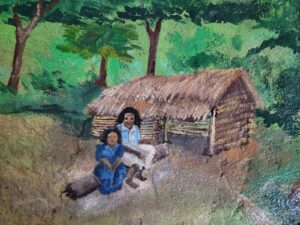
Artiste’s impression of Soliga couple. The sketch is on a rock which is inside the forest guest house of BR Hills (Chetana Belagere/South First)
Soliga in Kannada means “children of bamboo”, says C Madhegowda, president of the Soliga Coffee Growers Association, representing the tribal families who cultivate coffee.
There are two theories on how the tribe got its name; one is rooted in mythology, and the other is more academic.
According to the first, Lord Mahadeshwara’s son Karayya once broke an anthill in anger after he found his cow releasing her milk on it; to his horror, he found his father meditating under the mud layers.
Thoroughly ashamed of his actions, Karayya ran into the forests and hid in a bamboo grove, giving his descendants the name Soliga, or “children of bamboo”.
The second theory is explained by coffee-grower Madhegowda, who holds a PhD in social work; according to him, the word Soliga has evolved from Sholaga, ”the tribe’s original name”, which came from the shola forests in the area.
Tribal lifestyle anywhere in India is generally simple, and so it is with the Soligas. But despite the humble life they lead, social worker Mahadevamma says her people have an immensely rich culture.
For instance, showing a facet of their thinking that runs at odds with the trend in much of educated India, the Soligas rejoice in the birth of a female more than that of a male baby.
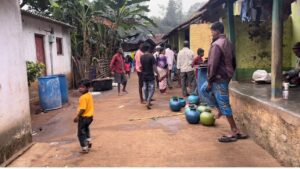
Soligas of Kanneri colony in BR Hills participating in the function where a young girl attained her menarche. (Chetana Belagere/South First)
“Boys take to alcohol and lose emotional connect with their elders,” she explains. “Girls are more grounded and rooted in the community.”
So much so, entire Soliga villages celebrate a young girl’s first period. This reporter walked into one such festivity at Kanneri Colony settlement.
The girl’s family was said to have spent about ₹1.5 lakh to treat each resident to a feast of ragi, rice and mutton curry.
“This is the only time we spend on a girl; we don’t spend on their birth or even their marriage,” says Parvathi, a resident.
“It’s inauspicious not to feed the villagers during this ritual.”
The Soligas, however, live too near the modern world not to be touched by it, and Mahadevamma and coffee planter Madhegowda are living proof of it: Both have received a modern education.
While Mahadevamma quit her studies after secondary school, Madhegowda completed his doctorate as a senior research associate at ATREE, a Bengaluru-based ecology and environment-focused research organisation.
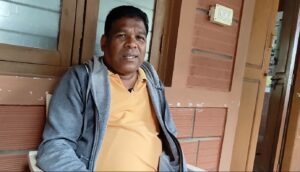
C Madhegowda, Soliga himself who holds a PhD in Social work and is working as research associate with ATREE. (Chetana Belagere/South First)
Apart from them, at least one person in each of the nearly 200 households in Kanneri Colony is educated; while most are college graduates, three of them have even done their PhDs.
Educated Soligas have actively fought for their tribal rights, their struggles led by the community’s welfare organisation — the Zilla Budakattu Girijana Abhivruddhi Sangha — or, the “Sangha”.
The Sangha’s work in the past, which the UNDP’s Equator Initiative finds “inspirational”, includes securing forest rights for them that saved the wild honey-gatherers from exploitative middlemen.
Equator Initiative, on its web page, notes it was the Sangha which forced the Indian government to pass the Forest Rights Act in 2005.
With this act, the land and conservation rights in forests were restored to their original beneficiaries — the forest-dwelling tribal communities — across the country.
This, says Equator Initiative, was “a pioneering effort by a grassroots tribal movement”.
This apart, the Sangha has worked on WHO-supported health programmes, implemented by Bengaluru’s Institute of Public Health, Mahadevamma’s employers.
So successful has the health initiative been that the late president APJ Abdul Kalam felicitated a nurse from Kanneri Colony in 2006 for her work among the Soligas.
The Sangha is also involved in imparting financial education, encouraging tribal women to save ₹10 every month in a common kitty for healthcare, children’s education and other needs.
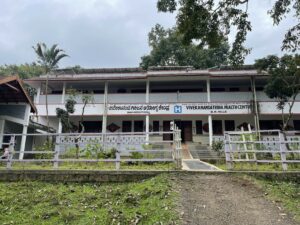
VGKK Hospital, the first go-to place for all the tribal villagers of BR Hills. (Chetana Belagere/South First)
During emergencies, the women can take loans of up to Rs 50,000 at an interest of ₹1 per month.
Another big sign of change is the language spoken on a regular basis; it seems vaguely familiar to this reporter, a Kannadiga but an outsider, and Mahadevamma explains why.
“My people feel inferior if they speak in forest language, so they have learnt the city language,” she says. “What you hear is a mix of both.”
Kanneri Colony itself, the most developed locality in the area, is another sign of the changing times.
Before being resettled here, its residents were forest dwellers and walked three km to fetch water from a lake.
“Today, we have a borewell to pump water,” Mahadevamma says proudly.
The other big sign of changes that the Soligas are undergoing is reflected in the patches of coffee cultivation in the thick forests, with Soliga men, women and children plucking beans.
Madhegowda, who heads the coffee association, says that, earlier, the 1,500 Soliga families in the 65 hamlets in BRT Tiger Reserve depended on forest produce like honey, tubers and amla.
But over the years, an ever-expanding population of monkeys and wild boars wreaked havoc on the forest produce, leaving the Soligas at their wits’ end.
So about 20 years ago, research organisation ATREE introduced them to paddy, millet and ragi. But that did not succeed either, because the wild boar and the monkeys raided these croplands too.
It was at this point that ATREE began encouraging the Soligas to take up coffee and pepper cultivation, and worked with them to set up the coffee growers association.
Some coffee is grown in the forest too; for this, the Soligas have secured “hakku patra” (legal rights) under Forest Rights Act to use non-timber forest products and sell them legally.
Over 600 tribal families are currently involved in coffee cultivation in the BR Hills, with each family earning around ₹20,000 a quintal.
ATREE buys their products and sells it under the brand name “Adavi coffee” at market rates.
Today, the Soligas grow nothing but coffee; if they do, Mahadevamma says that would be “a rarity”.
“We grow coffee on what little land we have,” she says.
As for food, the Soligas are now wholly dependent on the government. Everything that they eat — vegetables, ragi, rice, toor dal etc — comes from state-run ration shops.
A cooperative has also been formed for honey gatherers, who were earlier at the mercy of middlemen. The produce is sold to buyers at fixed rates.
“But coffee is our main income,” says Mahadevamma.
Mahadevamma describes the Soliga life of today as “living in an ever-changing space”. But there is one element in the Soliga way of life that is a constant, albeit a tenuous one: Their shamans.
For the Soligas, it is the “thammadi”, or the shaminist healer of a village, who is the go-to person for medical advice and treatment — be it for the humble cough and cold and fever, to the more complicated pregnancy-related or mental health issues, or even venomous snakebites.
In fact, even if a Soliga has to consult a doctor, it will not be done before a “thammadi” is visited, his diagnosis heard, and medicine — the sacred ash or the “dhoolti” — swallowed.
Every tribal hamlet has at least one “thammadi”; he is the widely respected local healer and sometimes the village chief as well.
At Kanneri Colony, the “thammadi” is Siddegowda, about 75 years old. But with his advancing years, his hearing ability seems to have dwindled; people have to speak loudly to be heard, but there is no guarantee they will be understood.
When his son, sitting close by, shouted out Mahadevamma’s arrival, Siddegowda was clearly uninterested. “Take them to the hospital,” he advised.
The elderly man’s response reflected more than his senility; it was also a sign of coming to terms with change.
The “thammadi” in the neighbouring hamlet of Bhutani, the 55-year-old Dasegowda, is more accommodative in his response to queries on shamanic practices.
Dasegowda has a temple in his courtyard. Here, patients are made to lie down in front of the idol of Goddess Lakshmi and spell out the problem. Based on that information, the healer makes his diagnosis.
“If someone is suffering from an ailment that has to be treated medically, the goddess will direct me to tell the person to take medical help,” Dasegowda says, clearly quite comfortable with the idea of modern medicine.
“But if that person is possessed, or ill because of black magic, I can provide a solution. Some ailments may require two or three visits.”
The solution is his “dhoolti”, the sacred ash, which has to be swallowed with water, like a regular tablet; it is supposed to bring instant relief.
Dasegowda is quite clear about the types of ailments his “dhoolti” and his chants work on, and where they are ineffective.
“Our dhoolti does not work for the common cold, fever, cough and certain pregnancy-related ailments. But I can provide relief with it if a person is possessed by a spirit,” he says.
So how does he get his “dhoolti”?
Dasegowda says he sources it from a secret place where the ashes of the demon killed by their god are buried, the spot known only to him, the knowledge of its location passed on to him by his ancestors.
“The dhoolti is not something you get in a shop,” he says.
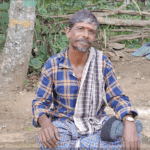
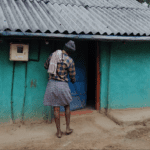
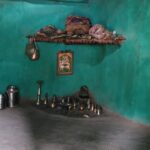
If Dasegowda’s account sounds incredible to the urban mind, many among the Soligas have no doubt about its veracity.
Every Friday and Monday evening, there are at least two to three families waiting near the small temple in his front yard, seeking treatment for whatever is ailing them.
“Our people do not believe in your medical system,” says 35-year-old Madappa of Bhutani village. “We are scared to go to hospitals. We feel our gods are the best doctors.”
Madappa is convinced about the power of the “thammadis”; “for any ailment we go to them”, he says.
He also lists the number of times he visited the village healer: When his child was born, his granddaughter was ill, and he himself had stomach pain.
“For the past three to four years, ASHA people and even our thammadis are telling us to see a doctor whenever we are unwell,” Madappa says, referring to health workers of an NGO who visit his village.
“But we first visit the thammadi to find out what our god’s message is.”
The faith in “thammadis” is so ingrained that even the educated Soligas are hesitant about ignoring them. Lakshmi, a mother of three, admits as much and cites her own case.
“I am educated and I know that going to a thammadi may not be the solution if someone in my family falls ill, but the belief is so strong that if something goes wrong after we visit the hospital, I will be the first to be blamed. So I don’t want to risk it and visit the thammadi first.”
Lakshmi says a lot has changed in her village. “We at least visit the doctor, and people are beginning to believe in hospitals,” she says.
Like a resident of nearby Hosa village who is getting her son treated for a mental disorder at a local hospital run by Karuna Trust, an NGO, but is also scared of speaking about it.
“I went to our thammadi but he could not help,” she says on condition of anonymity as she feared a backlash from neighbours for doubting their healer.
“But Dr Prashanth at the hospital says my son can be cured if he takes some tablets daily. This gives me hope.”
The practice of going to a shaman is more than just a spiritual tradition, says Madegowda of ATREE.
“It is also a sophisticated system of psychotherapy and social regulation that consoles the sufferer, softens generational tensions, gives temporary relief, and balances the mismatch between the city and forest.”
But as Lakshmi and the Hosa resident say, such therapy will more likely than not fail in treating complicated ailments.
Consequently, despite the assertions of believers like Madappa, there seems to be a gradual rise in preference for modern medicine among the Soligas.
Dasegowda too recognises it, and he blames the change in the Soliga’s lifestyle and food habits for it.
“We have no access to the forests and eat food supplied by the government. Everything about our traditions and lifestyle has changed. Today, whatever we eat, contains chemicals. This is why our traditional medicines are not working,” says Dasegowda.
“Earlier, our dhoolti used to be given along with tubers and some roots available in the forests. That worked. Be it any ailment, I had the cure.”
Dasegowda says he does not want to lie to his people and says only god can cure everything.
“I only tell them that they should accept the reality of chemical-laden food and the polluted environment the food is coming from. The way our lifestyles have changed. They should know that our gods also can’t do much.”
The thammadi concedes that till a few years back, his people would not have considered stepping into the chambers of a city doctor.
Today, he is reconciled to the unimaginable.
“Now we must adapt to the change,” he says.

Apr 26, 2024

Apr 26, 2024

Apr 26, 2024

Apr 26, 2024

Apr 26, 2024

Apr 26, 2024